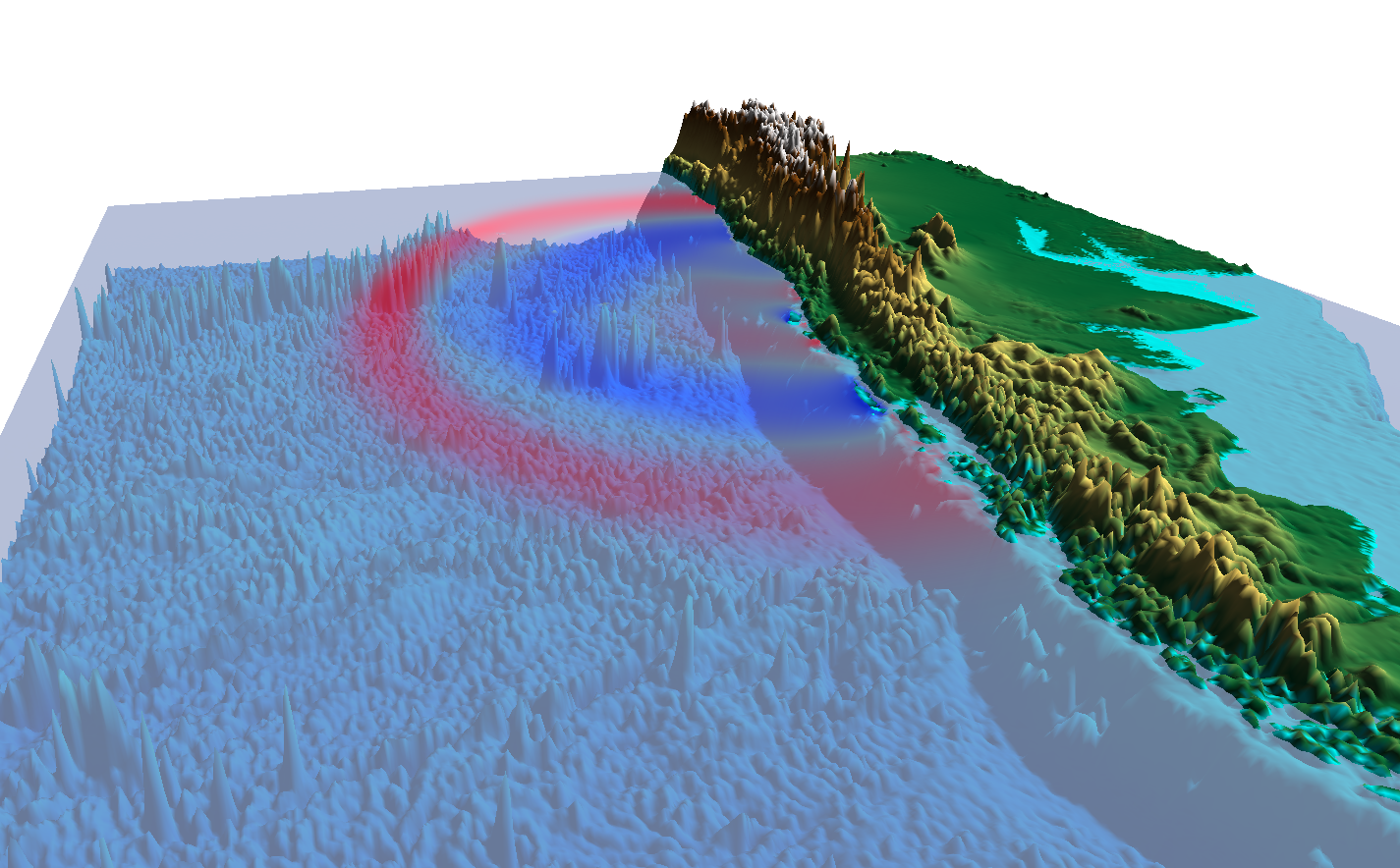

For Juan de Fuca and Georgia Straits, the Cascadia megathrust dominates the hazard at both levels. For outer Pacific coastlines, the ≥1.5 m run-up hazard is dominated by far-field subduction zones, but the probability of run-up ≥3 m is highest for local megathrust sources, particularly the Cascadia subduction zone thrust sources further north are also significant, as illustrated by the 2012 Haida Gwaii event. For larger run-up with significant damage potential (≥3 m), Pacific hazard is ~10–30 % in 50 years, again much larger than both the Atlantic (~1–5 %) and Arctic (<1 %). The cumulative estimated tsunami hazard for potentially damaging run-up (≥1.5 m) of the outer Pacific coastline is ~40–80 % in 50 years, respectively one and two orders of magnitude greater than the outer Atlantic (~1–15 %) and the Arctic (<1 %). Analyses involve published historical, palaeotsunami and palaeoseismic data, modelling, and empirical relations between fault area, earthquake magnitude, and tsunami run-up. We present a preliminary probabilistic tsunami hazard assessment of Canadian coastlines from local and far-field, earthquake, and large submarine landslide sources. Part 2 of the bibliography is a less exhaustive compilation of general tsunami references covering topics of tsunami science, tsunami hazard analysis, and studies of historical and pre-historic tsunamis from elsewhere in the world that may have relevance to studies of Canadian tsunamis. In turn, each regional section may include sub-sections pertaining to studies of historical and/or potential future tsunamis. Within each regional section, a list of general references is followed by more specific sections, e.g., for the Pacific coast: earthquake-induced tsunamis, landslide-induced tsunamis, meteorological tsunamis, and Pacific far-field sources. The references are arranged regionally, with different sections for Canada-wide references, and the Pacific, Atlantic, and Arctic coasts. The first part includes the results of a thorough literature search for references pertaining directly to tsunami hazard in Canada. The bibliography consists of two main parts. Each entry includes a bibliographic reference as well as either an abstract (where available), summary, conclusions, introduction, preface or contents.

Conference abstracts are generally included only when the information is unavailable elsewhere. The bibliography lists published papers, books, monographs, theses, and readily available manuscript reports. An annotated bibliography of references relevant to tsunami hazard in Canada has been compiled.


 0 kommentar(er)
0 kommentar(er)
